Manipulated estimates of Levelised Cost of Energy tables showing wind and solar to be the cheapest supplies of energy are contradicted by the trends on actual electricity costs and inter-country comparisons.
The readily available data by country for the wind and solar renewables share and price of electricity show a high share of renewables is concomitant with high electricity costs. The cheapest electricity is found in the nations with the lowest renewable energy share: Saudi Arabia, Russia, India, UAE and Korea. Germany, the UK, the Netherlands, Spain and Italy have high prices and high renewables shares.
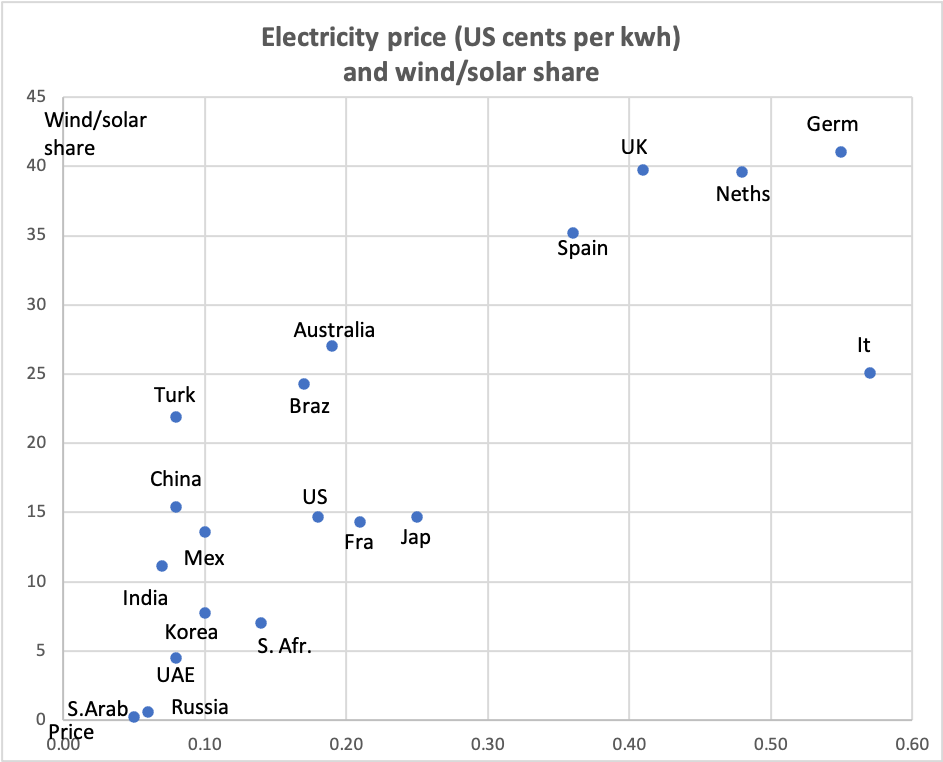
Australia’s renewables share is similar to that of Italy, but (for the time being) has lower electricity prices.
Even so, there is accumulated vested interests in promoting the ‘renewables are cheap(ish)’ myth.
For Australia, this comprises a vast bureaucracy of government departments, research agencies like CSIRO, government-assisted NGOs, an array of educational and financial institutions and, of course, politicians in both the ALP and the Coalition. The National Party, in seeking greater scrutiny of new renewable proposals, is edging its way to abandoning the sacred Net Zero creed. Politicians will shamelessly reverse course on a policy they have championed when it proves to be downright wrong and unpopular. They will avoid the pitchforks by blaming poor advice from the ‘experts’. These experts have also proven adept at dodging the bullets for policy failures (think the 264 UK economists who maintained Mrs Thatcher’s cost-cutting would have catastrophic consequences and the health experts who promoted Covid lockdowns). Once the climate myth and its renewable energy companion are discredited, they will dig deep to find another cause receptive to government intervention.
In spite of renewables requiring massive subsidies to be profitably installed – $10 billion a year in Australia’s case – propaganda about renewables being the cheapest form of energy is unrelenting. But subsidies aside, renewables are only remotely competitive if consumers will take their electricity whenever it is produced and will do without it whenever the vagaries of weather pare back its availability. That’s the equivalent of skiers paying for lift tickets even if there’s no snow and flocking to the slopes in even greater numbers during a blizzard!
For anything approaching the government’s goal of 100 per cent renewables, the backup required is upward of 20 days of storage based on the estimates of Francis Menton. For Australia that is 13,000,000 megawatt hours. Even with highly optimistic assumptions, Paul McArdle of Global Roam came to an estimate of 9,600,000 megawatt hours. Menton cites the US National Renewable Energy Laboratory estimates of storage costs by 2030 at $US200,000 per megawatt hour. This cost means reliability-proofing Australia’s network at an outlay many times the nation’s GNP. And this is just to firm-up the weather-dependent sources of energy, an expense that is not required for coal, gas or indeed, nuclear.
For its part, to accommodate the dispersed nature of wind and solar, the government plans to spend $100 billion for transmission, a five-fold increase on the present system’s costs. On top of this are sums, not yet estimated, for reinforcing the distribution network to allow rooftop generation to be exported.
But like the cunning plans of Blackadder’s Baldrick, these schemes are not panning out.
Farmers, fishers, and other people in remote locations are showing an unexpected truculence; for many, the transmission lines and land-extensive wind and solar operations impose inefficiencies (for example, impeding spraying) additional to the national waste they represent. Other opposition stems from people more fully recognising the visual and noise intrusion. Coordinated local opposition is being generated against individual projects, causing a slowdown in project authorisations. These are bringing unexpected costs to renewable energy proposals and retarding the already ambitious plans for Net Zero. Governments are reacting by seeking to truncate development approval procedures but this may lead to even greater opposition.
In addition, global supply costs are rising. One outcome was a poor response to the UK government’s latest applications for additional wind and solar, despite contracts being offered at prices 2-7 times their actual value. In the US, Danish international offshore leader, Orsted has faced cost escalations bringing a collapse in its share price.
Other international pressures add to the home-grown ones. India, China, and Saudi Arabia have opposed a proposal by Western countries to cut greenhouse gas emissions by 60 per cent by 2035. What was once called the Third World now accounts for the great bulk of global CO2 emissions and places a low priority on abating CO2 emissions. Those countries’ actions will kick down the door of the global warming and renewable energy farce. This cannot come too soon.
Got something to add? Join the discussion and comment below.
Get 10 issues for just $10
Subscribe to The Spectator Australia today for the next 10 magazine issues, plus full online access, for just $10.

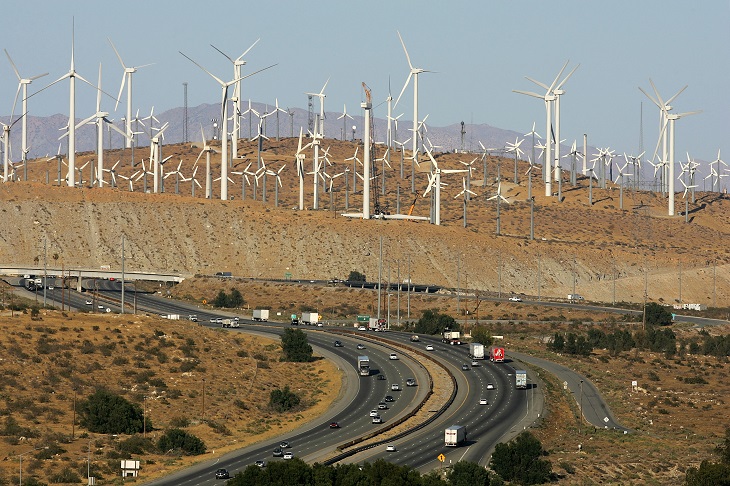
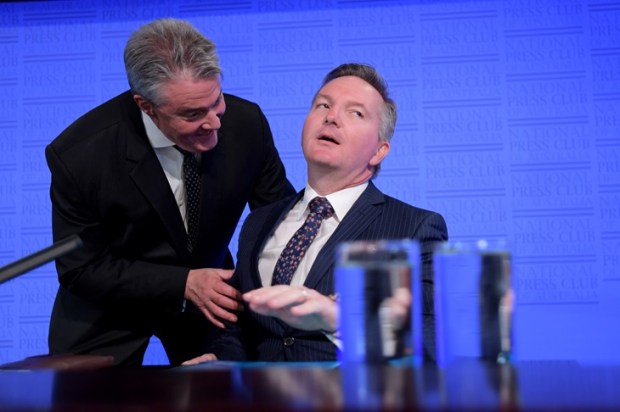
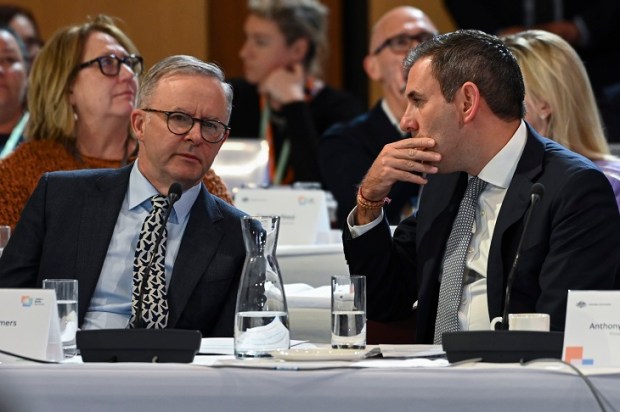

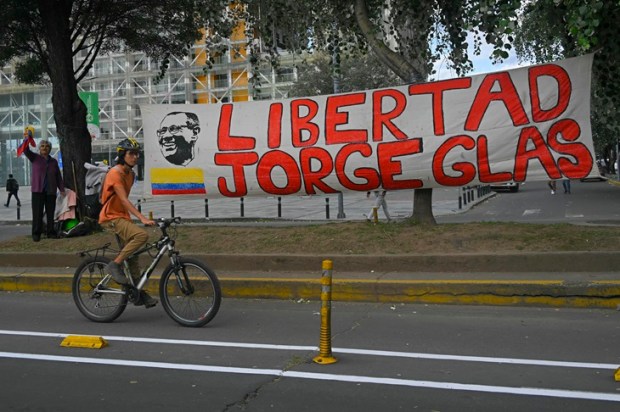




















Comments
Don't miss out
Join the conversation with other Spectator Australia readers. Subscribe to leave a comment.
SUBSCRIBEAlready a subscriber? Log in